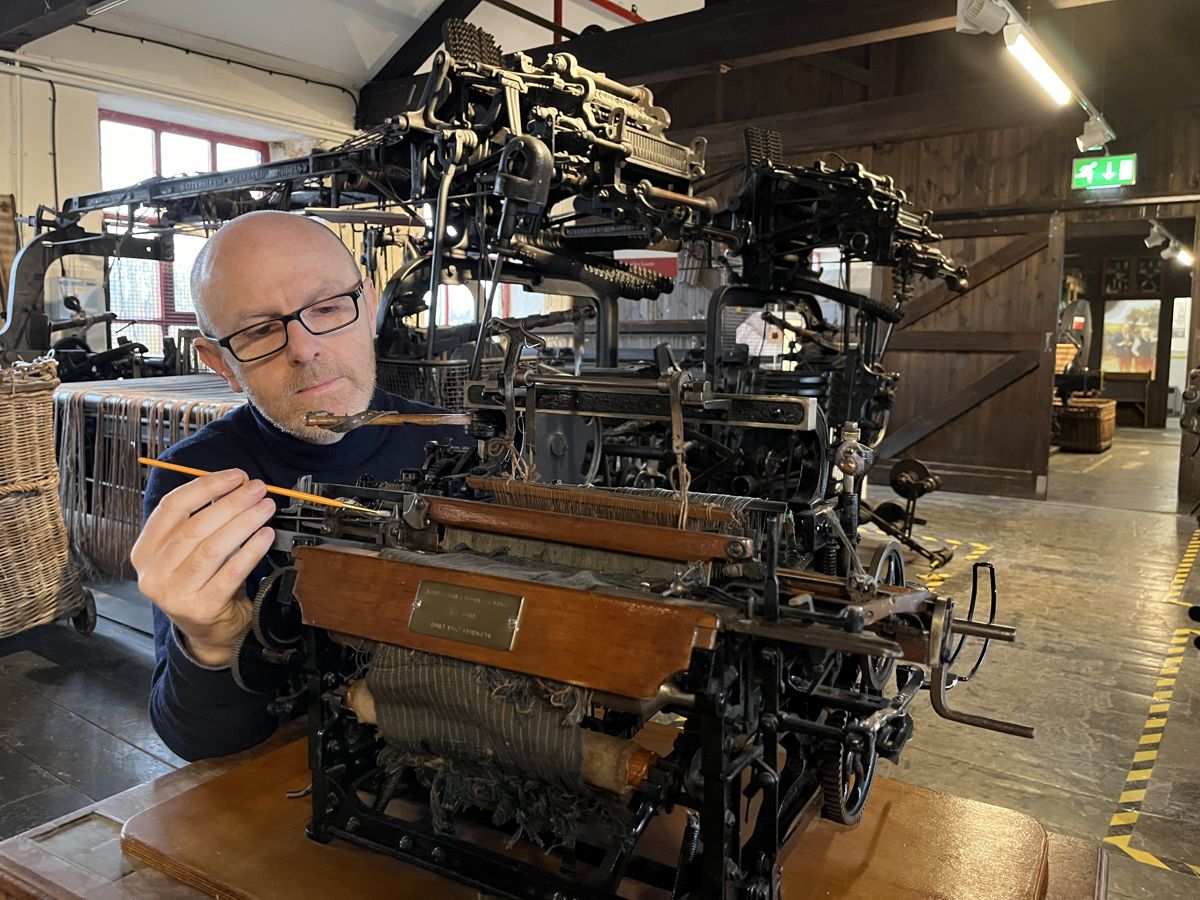The tiny loom exhibit at Leeds Industrial Museum showcases a scale model of the looms by Wilson and Longbottom alongside the full-size Hattersley standard loom, highlighting Yorkshire’s textile heritage and the complexity of textile manufacture. This juxtaposition celebrates the ingenuity of local industry and demonstrates the historical significance of these machines in establishing Yorkshire as a textile hub.
What is the significance of the tiny loom exhibit at Leeds Industrial Museum?
The tiny loom exhibit at Leeds Industrial Museum highlights Yorkshire’s textile heritage, showcasing a scale model of the looms by Wilson and Longbottom alongside the full-size Hattersley standard loom. This juxtaposition celebrates the ingenuity of local industry and serves as an educational tool, demonstrating the complexity of textile manufacture that contributed to Yorkshire’s status as a textile hub.
A Testament to Yorkshire’s Textile Heritage
At the Leeds Industrial Museum, an intriguing exhibit juxtaposes the grandeur of industrial machinery with the intricacy of miniature craftsmanship. On display is a tiny loom, a marvel of engineering barely half a meter high, that stands as a testament to Yorkshire’s rich textile heritage. This scale model, created with astonishing attention to detail, mirrors the formidable looms once produced by Barnsley’s prominent manufacturer, Wilson and Longbottom. These machines, pivotal during the zenith of Yorkshire’s textile industry, were shipped to factories worldwide.
The meticulous conservation of this minuscule wonder occurred in the proximity of its colossal counterpart, the Hattersley standard loom. A masterclass in miniaturization, the model includes not only a detailed copy of the tools and accessories that accompany its larger relation but also boasts a handwritten manual by its creator. “Seeing both contrasting machines side-by-side really brings home the ingenuity and pride behind these remarkable looms, which dominated the Yorkshire textile industry for generations,” noted John McGoldrick, Leeds Museums and Galleries’ curator of industrial history.
Constructed in 1945, the model was once a fully operational machine. Despite its size, it even features a half-woven green handkerchief and miniature punched cards that, in full-size looms, guide the weaving process. These artifacts serve as both a historical record and an educational tool, demonstrating the complexity of textile manufacture.
The Looms of Hattersley: A Legacy of Innovation
The Leeds Industrial Museum is home to not just the scale model but also the iconic Hattersley standard loom, a machine synonymous with durability and efficiency. Crafted in 1933 by George Hattersley and Sons Ltd. of Keighley, a firm renowned for producing a diverse array of looms until its closure in 1981, this loom exemplifies the pinnacle of industrial craftsmanship. Each Hattersley loom was meticulously packed to ensure flawless operation upon assembly, reflecting the precision and care taken in their construction.
Remarkably, many of these sturdy looms remain operational, a testament to the quality of their manufacture. The museum’s own Hattersley loom has been used recently to weave a unique ‘Armley Weave’ cloth, highlighting the functional legacy of these machines. “Looking at the full-sized loom also gives a real sense of the size and power of the real thing, and it’s easy to imagine textile mills filled with these impressive machines which helped establish the county as such an important hub for the whole industry,” McGoldrick expresses, emphasizing the historical significance of such machines.
Their reputation for excellence is well-deserved, with the Hattersley name still revered throughout the textile world. The looms they produced played a pivotal role in the development of Yorkshire as a leading textile hub, shaping not only local industry but global textile practices as well.
Leeds Industrial Museum: A Glimpse into Textile Triumphs
The Leeds Industrial Museum itself is an artifact of the city’s industrial past. Originally a working woollen mill built at least in the 1600s, it saw significant expansion under the ownership of Colonel Thomas Lloyd, a Leeds cloth merchant, in the late 1700s. At its peak, Armley Mills was hailed as the largest of its kind in the world. After production ceased in 1969, the site was repurposed as the Leeds Industrial Museum and opened to the public in 1982.
Today, the museum showcases an array of vintage machinery, including traditional looms and other textile equipment. These pieces not only celebrate the technological advancements of their time but also serve as a bridge connecting us to the lives and labors of those who operated them. “Leeds has a unique and rich heritage in the textile industry, and we’re fortunate that so many of these incredible machines, which once filled Yorkshire’s mills and factories, have survived in such remarkable condition,” said Councillor Jonathan Pryor, Leeds City Council’s deputy leader and executive member for economy, culture, and education.
Engaging with the displays at the Leeds Industrial Museum allows visitors to step back in time, to an era when the rhythmic clatter of looms was the heartbeat of Yorkshire’s economy. This heritage is not just preserved in the silent stillness of machinery but is also celebrated through special events and educational programs that breathe life into the history of Leeds’ textile saga.
For more information about Leeds Industrial Museum, please visit Leeds Industrial Museum.
ENDS
- The tiny loom exhibit at Leeds Industrial Museum showcases a scale model of the looms by Wilson and Longbottom alongside the full-size Hattersley standard loom, highlighting Yorkshire’s textile heritage and the complexity of textile manufacture.
- The exhibit serves as an educational tool, demonstrating the complexity of textile manufacture and the historical significance of these machines in establishing Yorkshire as a textile hub.
- The scale model of the looms by Wilson and Longbottom is a testament to Yorkshire’s rich textile heritage and the ingenuity of local industry.
- The Hattersley standard loom, also on display at the museum, represents the pinnacle of industrial craftsmanship and exemplifies durability and efficiency.
- The Leeds Industrial Museum showcases an array of vintage machinery, including traditional looms, and allows visitors to engage with the history of Leeds’ textile industry.
